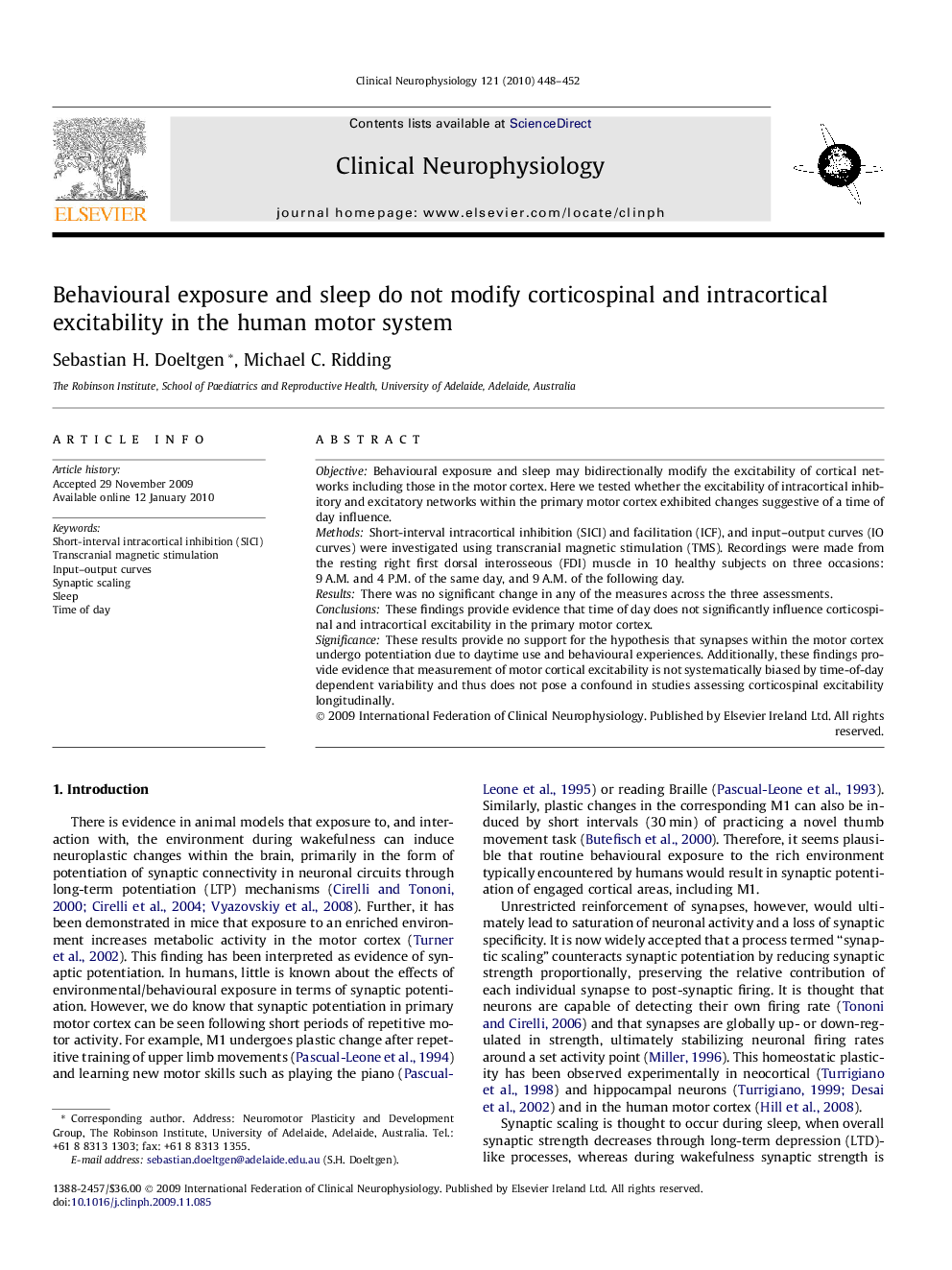| Article ID | Journal | Published Year | Pages | File Type |
|---|---|---|---|---|
| 3045163 | Clinical Neurophysiology | 2010 | 5 Pages |
ObjectiveBehavioural exposure and sleep may bidirectionally modify the excitability of cortical networks including those in the motor cortex. Here we tested whether the excitability of intracortical inhibitory and excitatory networks within the primary motor cortex exhibited changes suggestive of a time of day influence.MethodsShort-interval intracortical inhibition (SICI) and facilitation (ICF), and input–output curves (IO curves) were investigated using transcranial magnetic stimulation (TMS). Recordings were made from the resting right first dorsal interosseous (FDI) muscle in 10 healthy subjects on three occasions: 9 A.M. and 4 P.M. of the same day, and 9 A.M. of the following day.ResultsThere was no significant change in any of the measures across the three assessments.ConclusionsThese findings provide evidence that time of day does not significantly influence corticospinal and intracortical excitability in the primary motor cortex.SignificanceThese results provide no support for the hypothesis that synapses within the motor cortex undergo potentiation due to daytime use and behavioural experiences. Additionally, these findings provide evidence that measurement of motor cortical excitability is not systematically biased by time-of-day dependent variability and thus does not pose a confound in studies assessing corticospinal excitability longitudinally.
